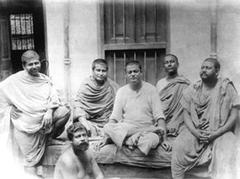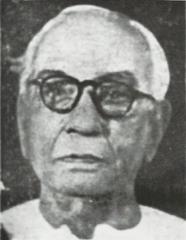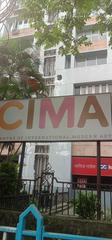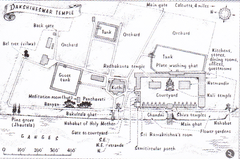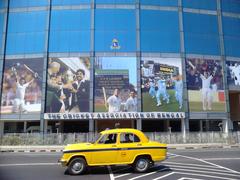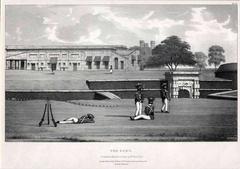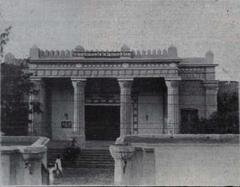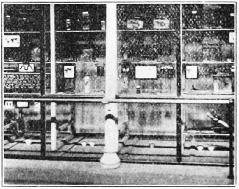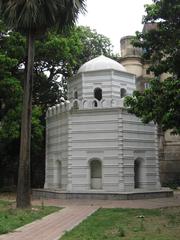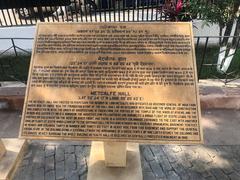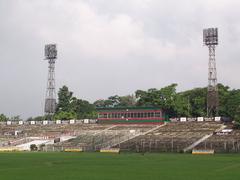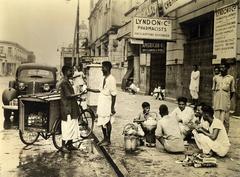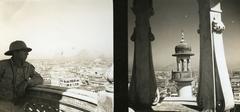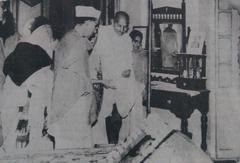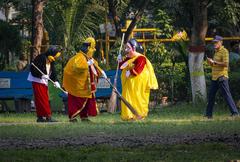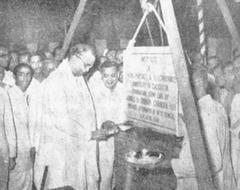Boat Museum Kolkata: Visiting Hours, Tickets, and Historical Sites Guide
Date: 14/06/2025
Introduction
The Boat Museum Kolkata, located in Ambedkar Bhavan, Salt Lake, is a singular tribute to Bengal’s enduring maritime heritage. Established with the support of the Government of West Bengal’s Backward Classes Welfare Department, the museum is both an archive and a celebration of Bengal’s deep-rooted relationship with its rivers. Showcasing 46 meticulously crafted wooden boat models—from ancient riverine vessels to colonial pinnaces and modern boats—the museum offers visitors a unique journey through the historical, ecological, and cultural evolution of Bengal’s waterways. By collaborating with master artisans, particularly from the Rajbanshi community, the museum also preserves endangered craftsmanship and provides insight into marginalized traditions (GetBengal; Museums of India).
This comprehensive guide details Boat Museum Kolkata visiting hours, ticketing, accessibility, special programs, travel tips, and nearby attractions, ensuring a rewarding experience for history lovers, students, and cultural explorers (Curly Tales; Ankita Poddar).
Table of Contents
- Origins and Establishment of the Boat Museum
- Historical Context: Bengal’s Maritime Legacy
- The Museum’s Collection: Highlights and Craftsmanship
- Cultural and Educational Insights
- Museum Layout and Visitor Experience
- Visiting Hours, Tickets, and Accessibility
- Special Events, Workshops, and Programs
- Travel Tips and Nearby Attractions
- Frequently Asked Questions (FAQs)
- Conclusion and Recommendations
- References
Origins and Establishment of the Boat Museum
The Boat Museum was conceptualized and brought to life by the Backward Classes Welfare Department, Government of West Bengal. Its foundation rests on the expertise of master craftsmen from Dinajpur and Dakshin Dinajpur, who meticulously recreated authentic models of Bengal’s traditional boats. The museum is designed to preserve and promote Bengal’s identity as the “Land of Maritime Valour,” as well as to reconnect modern audiences with a vanishing riverine culture (GetBengal).
Historical Context: Bengal’s Maritime Legacy
Bengal’s rivers—the Ganges, Hooghly, and their myriad tributaries—shaped the region’s economy, society, and culture. Boats were central to daily life, commerce, and ceremonial traditions. Literary and artistic figures such as Rabindranath Tagore often referenced Bengal’s boats in their work, while the colonial era brought new boat types for cargo, leisure, and official use. The museum’s collection reflects this historical breadth, documenting the evolution of boat-building and the pivotal role of rivers in Bengal’s development (Scroll.in).
The Museum’s Collection: Highlights and Craftsmanship
Signature Boat Models
The Boat Museum houses 46 models that represent the diversity and ingenuity of Indian boat-building traditions. Highlights include:
- Chhip: Fast boats for fishing and river crossings.
- Pansi: Large cargo and passenger boats.
- Padma Boat: Used by Rabindranath Tagore for his travels and literary pursuits.
- Feal-Chara: Adapted for shallow waters.
- Promod Toroni: Ornate boats for leisure and nobility.
- Pinnace: Colonial-era designs influenced by European styles.
- Harappan Boat Amulet: An ancient model linking Bengal’s maritime heritage to the Indus Valley Civilization (Museums of India).
Each display features detailed descriptions of construction techniques, materials, and historical usage. The models, crafted primarily by Rajbanshi artisans, faithfully replicate traditional boat-building methods, preserving knowledge that is now at risk of extinction (The Hindu).
Cultural and Educational Insights
Indigenous Craftsmanship and Marginalized Communities
The museum’s models are products of collaboration with traditional artisans whose skills are endangered by modernization. By commissioning these craftsmen, the Boat Museum not only preserves their expertise but also restores dignity to marginalized communities such as the Rajbanshis (LBB).
Symbolism and Social Significance
Boats in Bengal have symbolized social status, economic activity, and spiritual life. The collection includes luxury boats like the replica of Tagore’s ‘Padma’, racing boats central to festivals, and workboats crucial to commerce and sustenance. Models such as the “Trawler” reflect cross-border cultural exchange with Bangladesh, showcasing the interconnected heritage of the Bengal delta (Storytrails).
Educational Value
As a living archive, the museum is invaluable for historians, students, and researchers. It offers interdisciplinary insights into anthropology, ecology, engineering, and design, and raises awareness about environmental stewardship and the ecological importance of rivers (Wikipedia).
Museum Layout and Visitor Experience
Architectural Overview
The Boat Museum’s purpose-built, single-story layout is designed for both accessibility and aesthetic appeal, drawing inspiration from riverine architecture. Galleries are organized thematically:
- Introductory Gallery: River geography, maps, and the evolution of boat-building.
- Traditional Boats of Bengal: Full-scale replicas and detailed models of iconic boat types.
- Craftsmanship and Techniques: Displays of traditional tools, construction methods, and artisan videos.
- Boats in Culture and Folklore: Folk art, music, literature, and festival exhibits.
- Modern Innovations and Conservation: Environmental challenges and future adaptations.
- Outdoor Display Area: Larger boats and periodic demonstrations in a riverside setting.
Wide corridors, benches, clear signage, and climate control ensure a comfortable and accessible experience for all visitors (Kolkata Tourism Guide).
Visiting Hours, Tickets, and Accessibility
- Hours: Tuesday–Sunday, 10:00 AM–5:00 PM. Closed on Mondays and public holidays.
- Entry Fee: Entry is free for all visitors, making the museum accessible to students, researchers, and tourists (Curly Tales).
- Accessibility: The museum is wheelchair-friendly, with ramps and accessible facilities. Visitors requiring additional assistance should contact staff in advance.
- Photography: Photography is generally prohibited to protect exhibits, but exceptions may be granted with prior permission.
- Guided Tours: No regular guided tours are available; however, special educational tours and workshops can be arranged during festivals or on request.
Special Events, Workshops, and Programs
The museum periodically hosts workshops on traditional boat-building, storytelling sessions, and exhibitions highlighting river folklore and ecological awareness. Programs like “The Arts of Banga” aim to revive interest in vanishing boat-related customs and engage schools and local communities (Scroll.in).
Travel Tips and Nearby Attractions
Travel Tips
- Best Time to Visit: Mornings and weekdays are less crowded.
- How to Reach: Easily accessible by taxi, bus, or metro from central Kolkata. Limited on-site parking is available.
- Seasonal Advice: October–March offers the most comfortable weather for city exploration.
Nearby Attractions
- Indian Museum: India’s oldest and largest museum.
- Victoria Memorial: Iconic colonial-era monument and museum.
- Kolkata Ghats: Historic riverfront steps ideal for scenic walks.
- Eco Park: Urban park for leisure and nature experiences.
- Adjacent Museums: The Ethnographic Museum, Kantha Museum, and Puppet Museum are also located within the same cultural complex (Kolkata City Tours).
Frequently Asked Questions (FAQs)
Q: What are the Boat Museum Kolkata visiting hours?
A: Tuesday to Sunday, 10:00 AM to 5:00 PM. Closed Mondays and public holidays.
Q: Is there an entry fee?
A: No, entry is free for all visitors.
Q: Is the museum accessible for differently-abled visitors?
A: Yes, the museum is wheelchair-friendly. Contact staff in advance for specific needs.
Q: Can I take photographs inside the museum?
A: Photography is generally not permitted unless special permission is granted.
Q: Are guided tours available?
A: No regular guided tours, but educational tours and workshops can be arranged on request.
Conclusion and Recommendations
The Boat Museum Kolkata is a unique institution that safeguards Bengal’s rich riverine and maritime heritage. Its free entry, accessible location, and diverse collection make it a must-visit for anyone interested in indigenous engineering, ecological adaptation, or cultural history. The museum not only preserves traditional boat-building artistry but also restores visibility to the marginalized communities whose skills have shaped Bengal’s identity (Museums of India; Scroll.in). Pair your visit with nearby attractions for a comprehensive cultural itinerary, and consider attending special events for a deeper experience.
For more information and updates, visit the official Boat Museum Kolkata page and follow the museum on social media.
References
- Boat Museum Kolkata: Visiting Hours, Tickets & History of This Unique Historical Site (GetBengal)
- Visiting the Boat Museum Kolkata: Hours, Tickets, and Historical Insights (Curly Tales)
- Boat Museum Kolkata: Visiting Hours, Tickets, and Exploring Bengal’s Maritime Heritage (Museums of India)
- Boat Museum Kolkata: Visiting Hours, Tickets, and Cultural Insights on Bengal’s Riverine Heritage (Scroll.in)
- Boat Museum Kolkata: Visiting Hours, Tickets, and Cultural Insights on Bengal’s Riverine Heritage (The Hindu)
- Visiting the Boat Museum Kolkata: Hours, Tickets, and Historical Insights (Ankita Poddar)
- Boat Museum Kolkata: Visiting Hours, Tickets, and Exploring Bengal’s Maritime Heritage (Kolkata Tourism Guide)
- Boat Museum Kolkata (Wikipedia)
- Boat Museum Kolkata (LBB)
- Boat Museum (Storytrails)
- Boat and Tribal Museum (Kolkata City Tours)
For a richer and more interactive experience, download the Audiala app for guided tours, audio descriptions, and the latest visitor information on Kolkata’s museums and cultural sites. Stay connected with updates and travel tips through the museum’s official social media channels.
